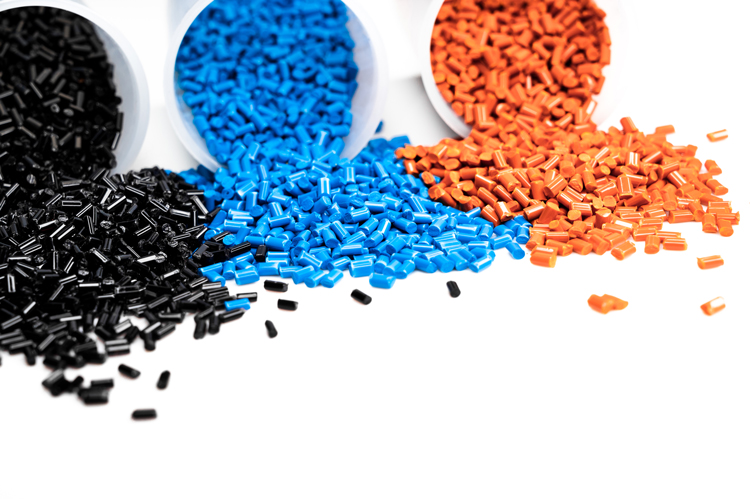4 Eco-Friendly & Commercial Benefits of Conformal Cooling for Manufacturers
With the push in recent years to focus on more environmentally-friendly products, many producers are turning their attention to alternatives. Specifically, bio-based materials. The problem is, processing these materials presents certain unique challenges in extended cycle times, compressed processing windows, and dimensional uncertainties. However, advances in additive manufacturing via conformal cooling are unlocking a myriad of new possibilities.
This emerging technology is changing the way we think about plastic products, from leveraging the power of biodegradable resin to pumping out parts faster. If you’re interested in learning more about the benefits of additive manufacturing and conformal cooling, Anova Innovations, a leading 3D steel printing manufacturer, discusses what conformal cooling is and how it’s revolutionizing the industry.
What is Additive Manufacturing?
Additive manufacturing (AM) makes conformal cooling possible. AM, also known as additive layer manufacturing (ALM), direct metal laser sintering (DMLS), and 3D printing, is a computer-aided process that creates complex models by adding layers of material, such as steel or metal. AM technology is especially useful when making intricate parts.

What is Conformal Cooling?
Conformal cooling is the process of using conformal cooling channels (CCCs) in plastic injection mold tools. CCCs follow the geometry and contours of a mold and provide uniform cooling. In essence, conformal cooling removes heat from all areas of a part at the same time. Through 3D printing, manufacturers can fabricate these conformal cooling channels inside an injection mold and ensure they maintain a consistent distance from the mold’s surface.
To truly appreciate this innovation, it’s useful to understand how mold makers once added cooling channels. Through a secondary process such as milling or drilling, traditional molds only had straight-line water cooling channels. These straight cooling channels had low cooling efficiency for curved molds because the channels could not adequately reach all hotspots in a part. Manufacturers’ improved ability to cool molds through conformal cooling channels reduces warpage, increases productivity, and opens up new options for bioplastics.
Benefits of Conformal Cooling
The cooling of a mold has a significant impact on various factors in the overall manufacturing of a part. Therefore, if you’re able to optimize the process, you’ll realize an array of benefits, including, but not limited to:
1. Reduced Cycle Times
With the ability to create conformal cooling channels, additive manufacturing offers a significant reduction in cooling time. Research from Molecular Diversity Preservation International (MDPI) showed a 40 percent reduction compared to conventional cooling (25 s). Similar reports indicate that other manufacturers are realizing decreases of as much as 70 percent.
2. Higher-Quality Parts
With conformal cooling, you can achieve higher quality molded parts with fewer weld lines, reduced surface roughness, less warpage, and most importantly, more dimensionally statistically capable parts. This benefit is especially vital for high-volume plastic part producers, where waste elimination equates to massive savings.
3. Boosted Productivity
Between faster cooling and less warpage, molds with conformal cooling channels can deliver up to a 50 percent increase in overall production. Even without performing an engineering analysis, you’ll likely be able to achieve a 10 percent reduction in cycle time. But with one, you’ll not only reduce the risk of mold failure, but you’ll also realize even bigger returns.
To highlight the significance of boosted productivity, let’s consider a report published in Plastic Technology Insider: A mold that is in the press 100% of the time generated $600,000 per year in sales. A conventional mold would generate an operating income of $46,800. A conformally cooled mold would generate:
- $59,400 operating income @ 20% cycle reduction (27% profit improvement)
- $66,000 operating income @ 30% cycle reduction (41% profit improvement)
- $72,600 operating income @ 40% cycle reduction (55% profit improvement)
When considering productivity, it’s also essential to think about the increased pressed capacity that comes from reduced cycle time. If you’re able to free up multiple presses on a shop floor, you’re talking about massive percent increases in profits.

4. Bioplastics
Bioplastics and biopolymers are biodegradable materials that come from renewable sources such as cellulose, starch, or sugar cane. Bioplastics can help manufacturers reduce their carbon footprint while still producing high-quality products. However, what makes them great also makes them challenging to work with.
More specifically, their biodegradability makes them susceptible to problems during the traditional molding process. Like their thermoplastic counterparts, bioplastics can’t stay molten for too long; otherwise, their quality will degrade and even become completely unusable.
The issue of waste constantly plagues manufacturers. However, when bioplastics are between 20 to 50 percent more costly than non-biodegradable resin, the room for error is exceptionally small. To ensure bioplastics don’t degrade, manufacturers should consider shifting toward 3D printed molds with optimized conformal cooling channels.
While it’s important to consider more eco-friendly ways of creating products from a climate change perspective, it’ll likely translate into higher sales. In fact, 79% of consumers expect businesses to improve and drive environmental change and seek out environmentally-friendly products. Further, a study from Cone Communications highlights that shifting to more eco-friendly processes builds a positive reputation, increases brand trust, and fosters customer loyalty.
Your Vision. Our Solution.
From massive increases in productivity to the potential to integrate bioplastics into your products, it’s clear that conformal cooling is revolutionizing how we think about injection molding. If you’re interested in how 3D steel printing can boost your business, reach out to Anova Innovations.
